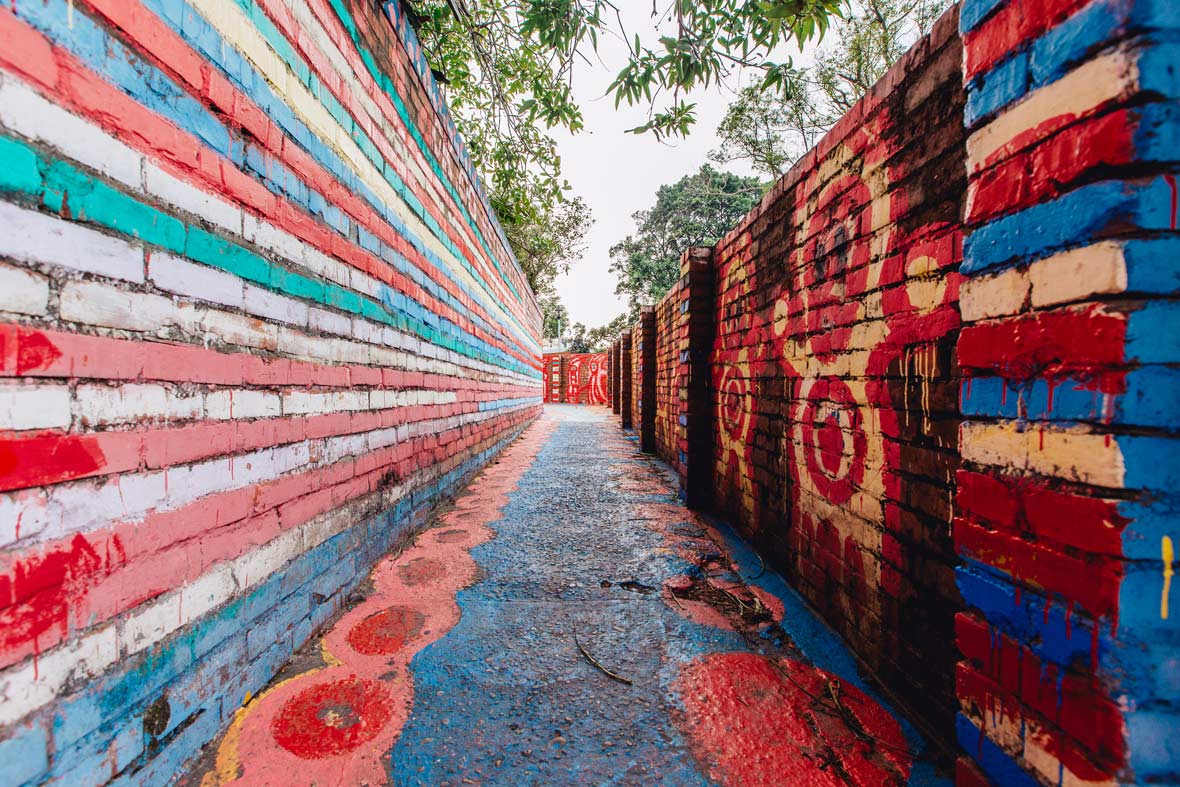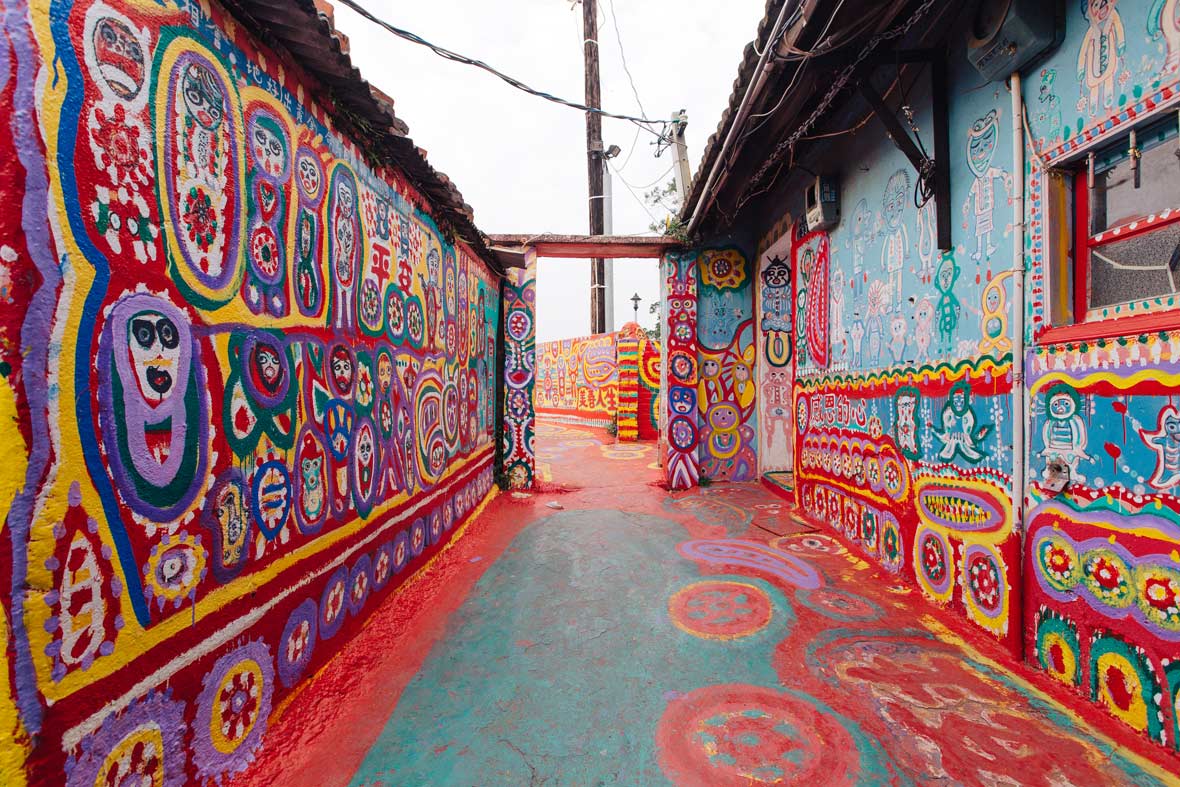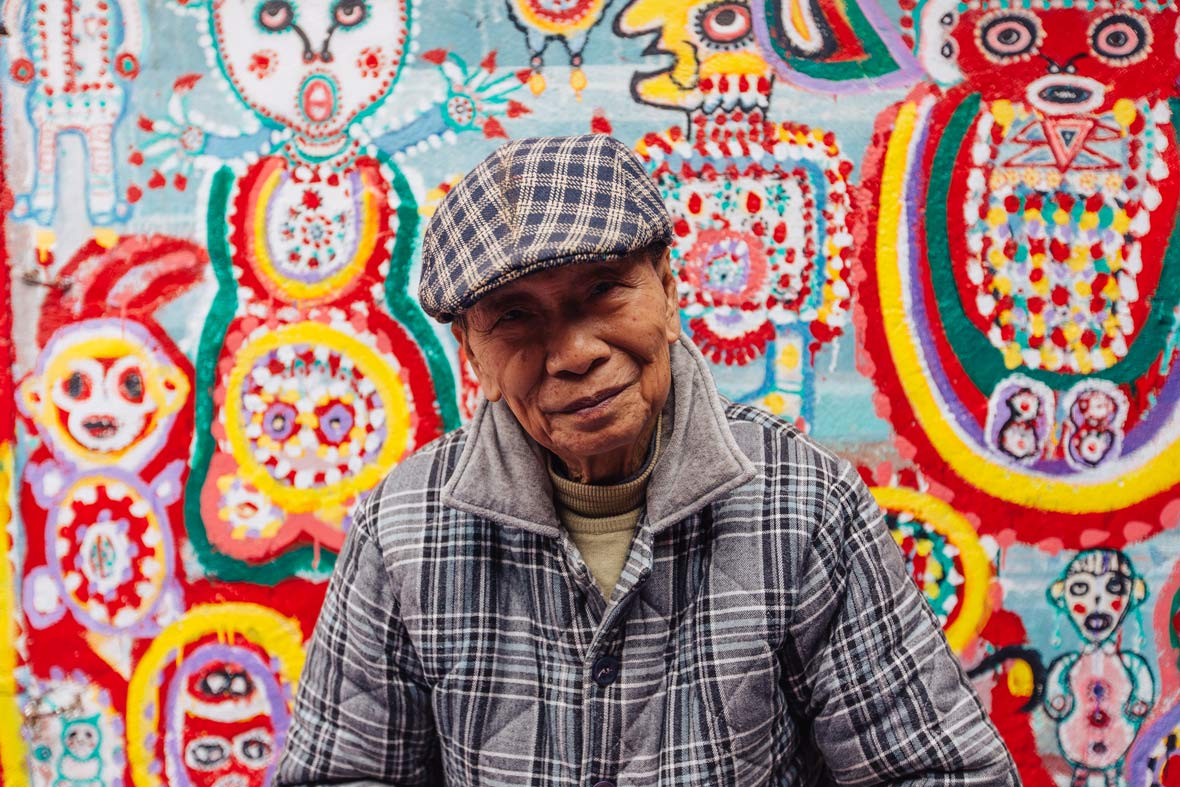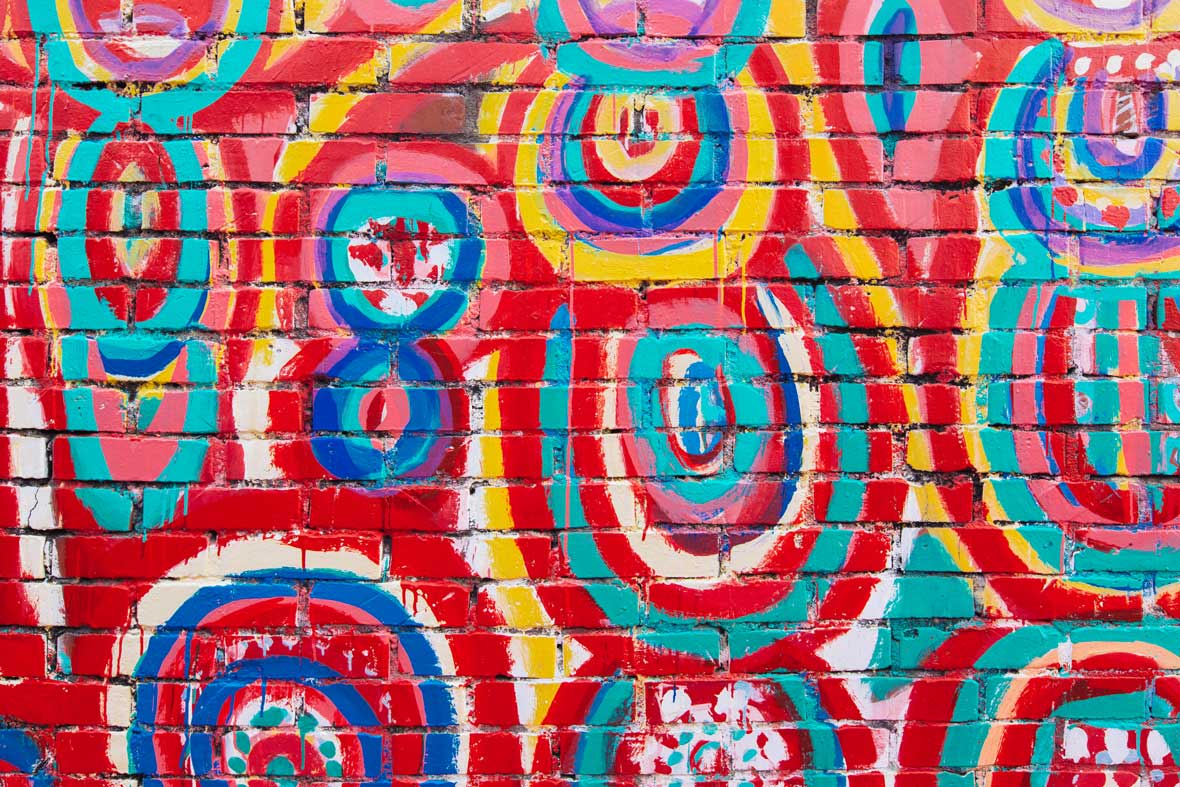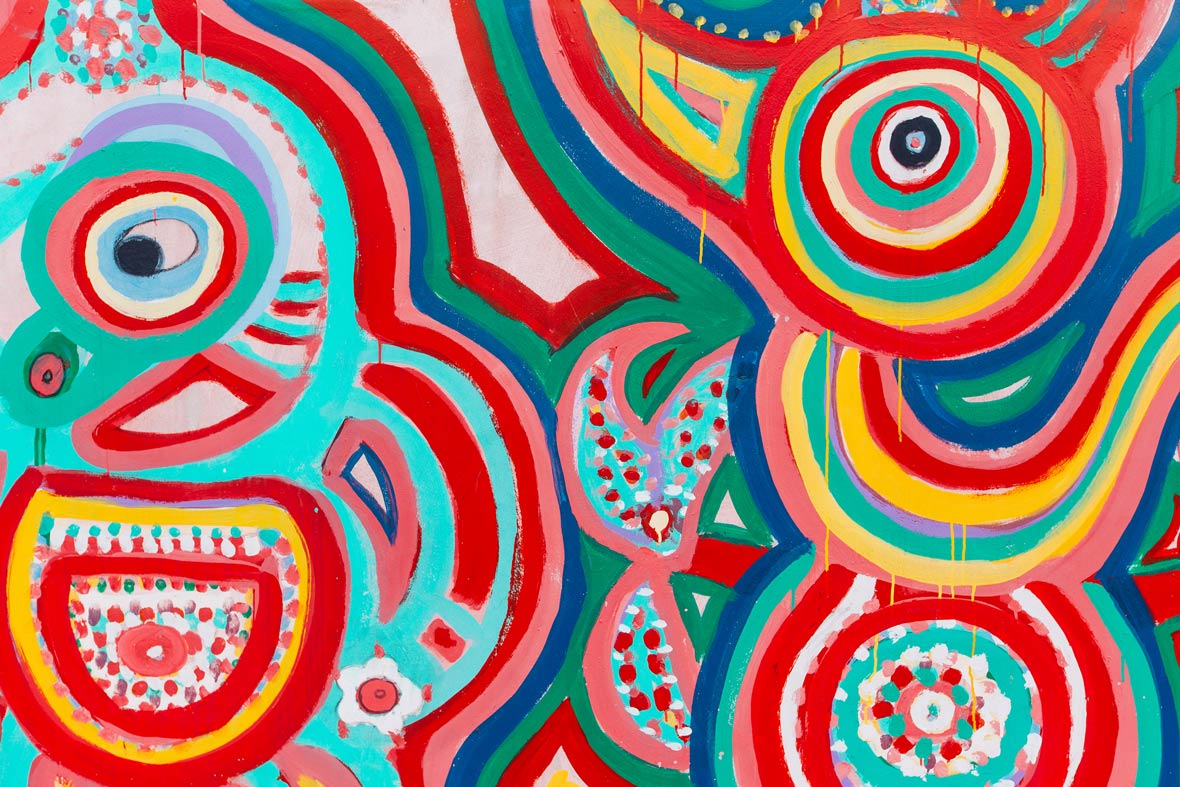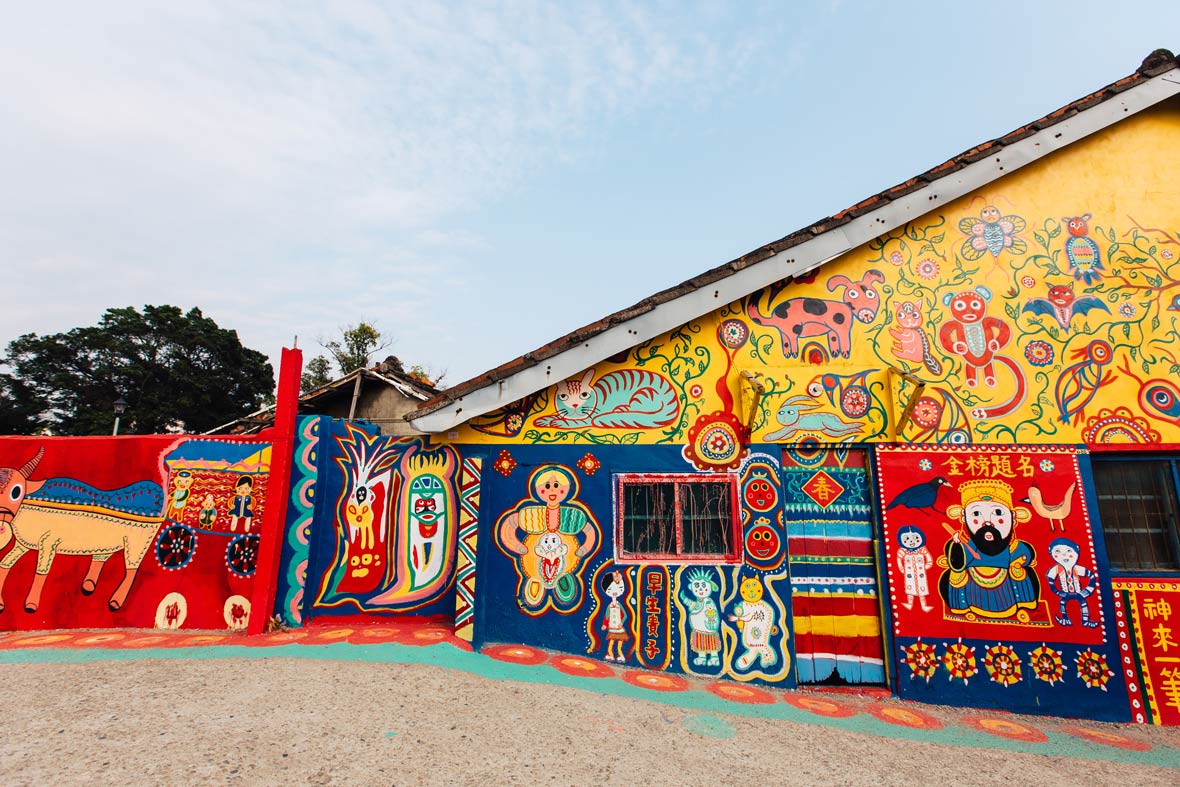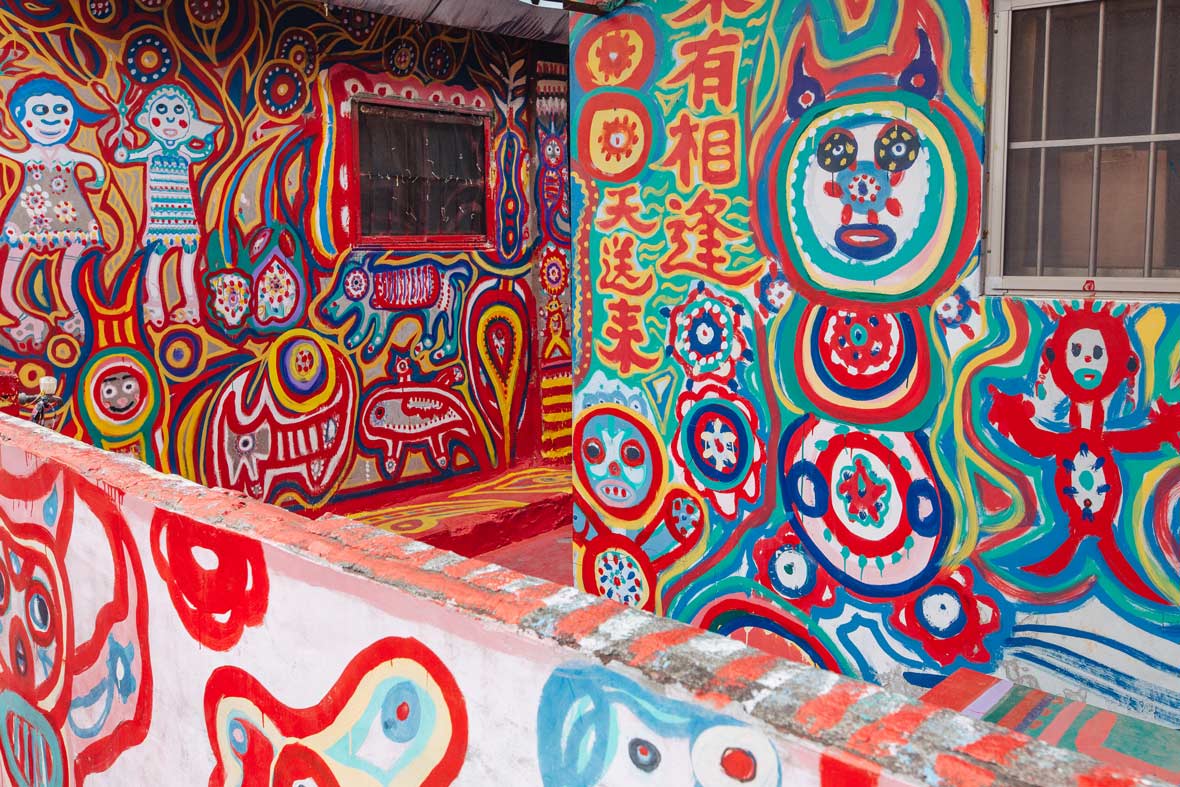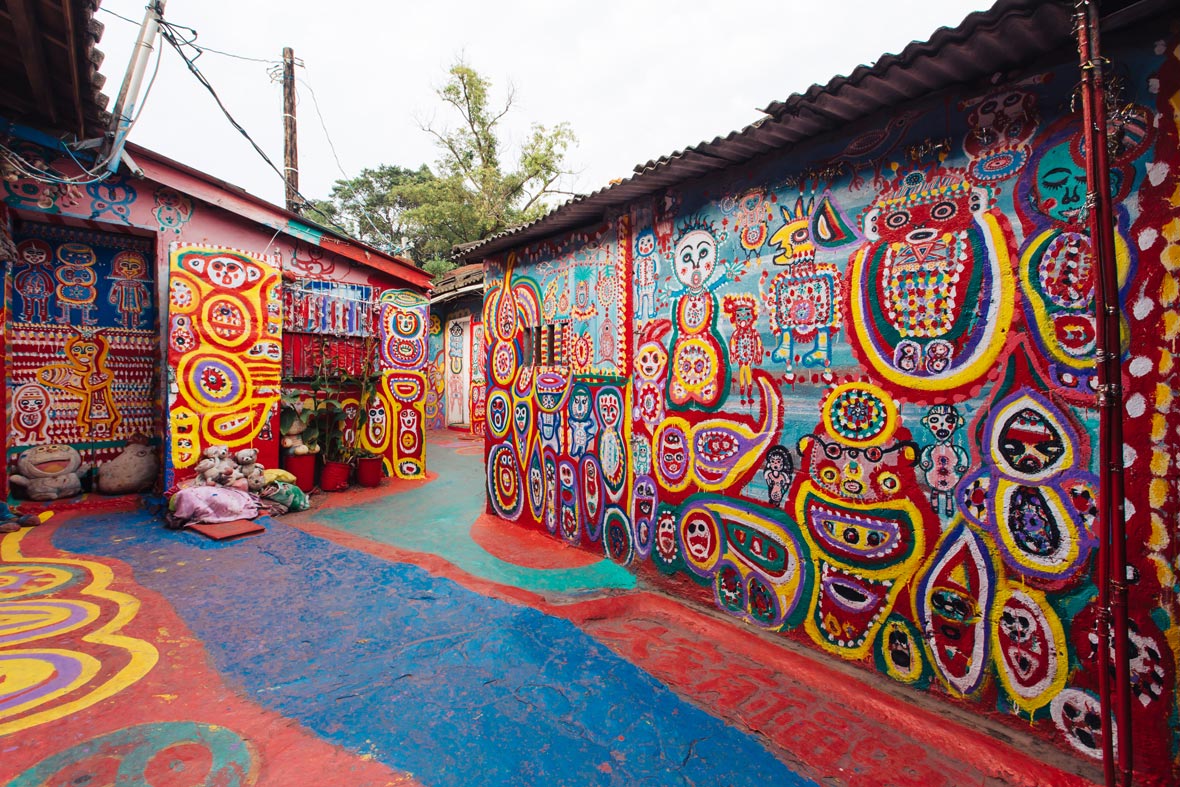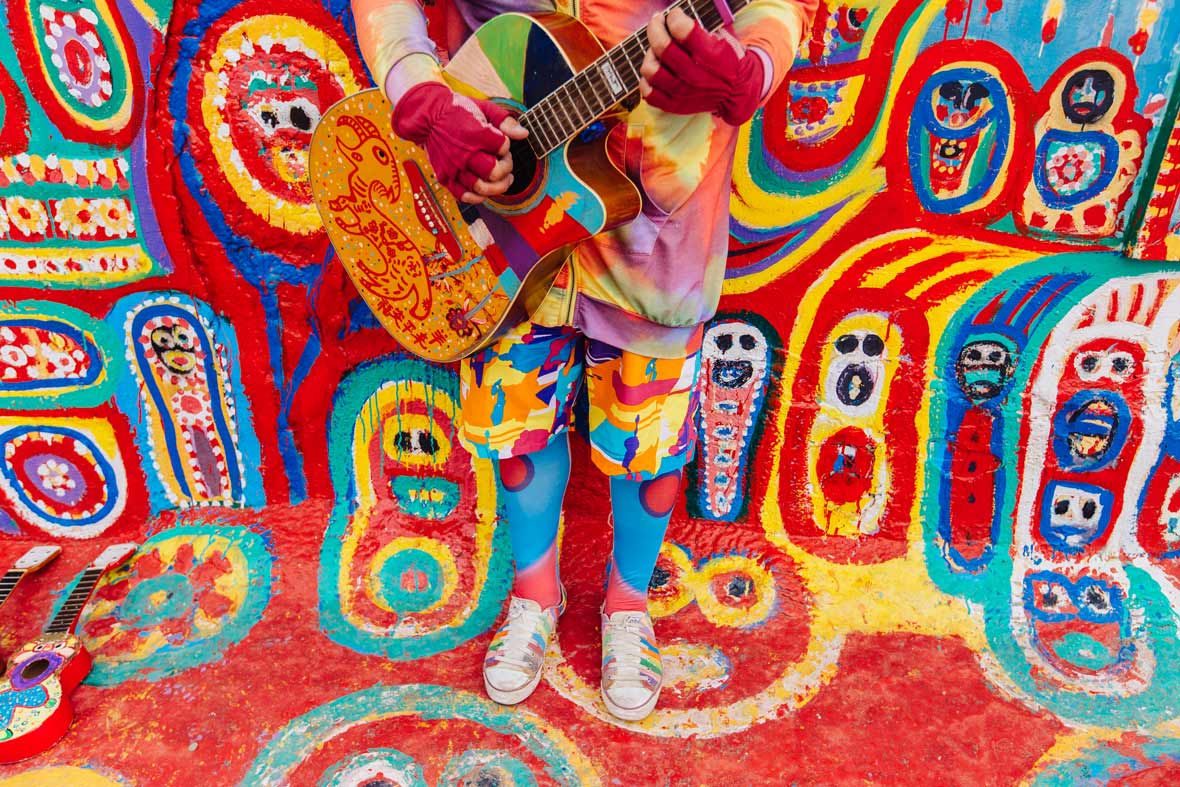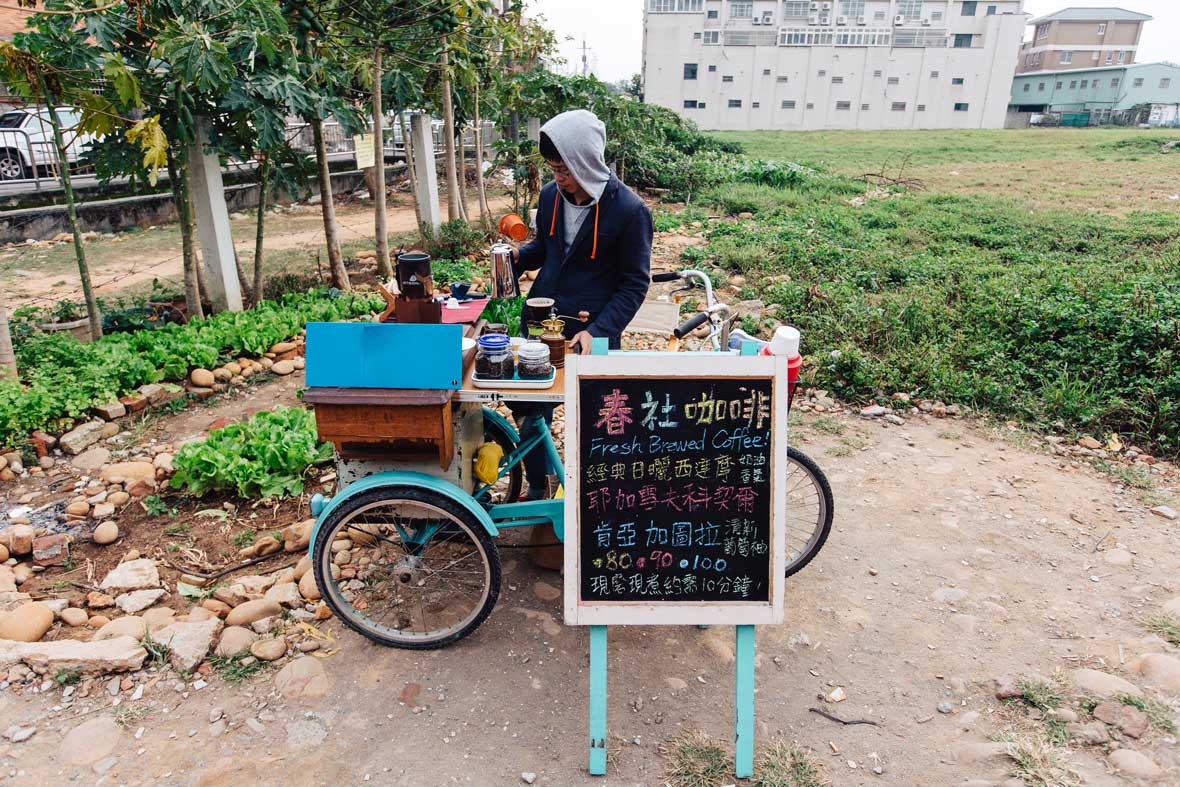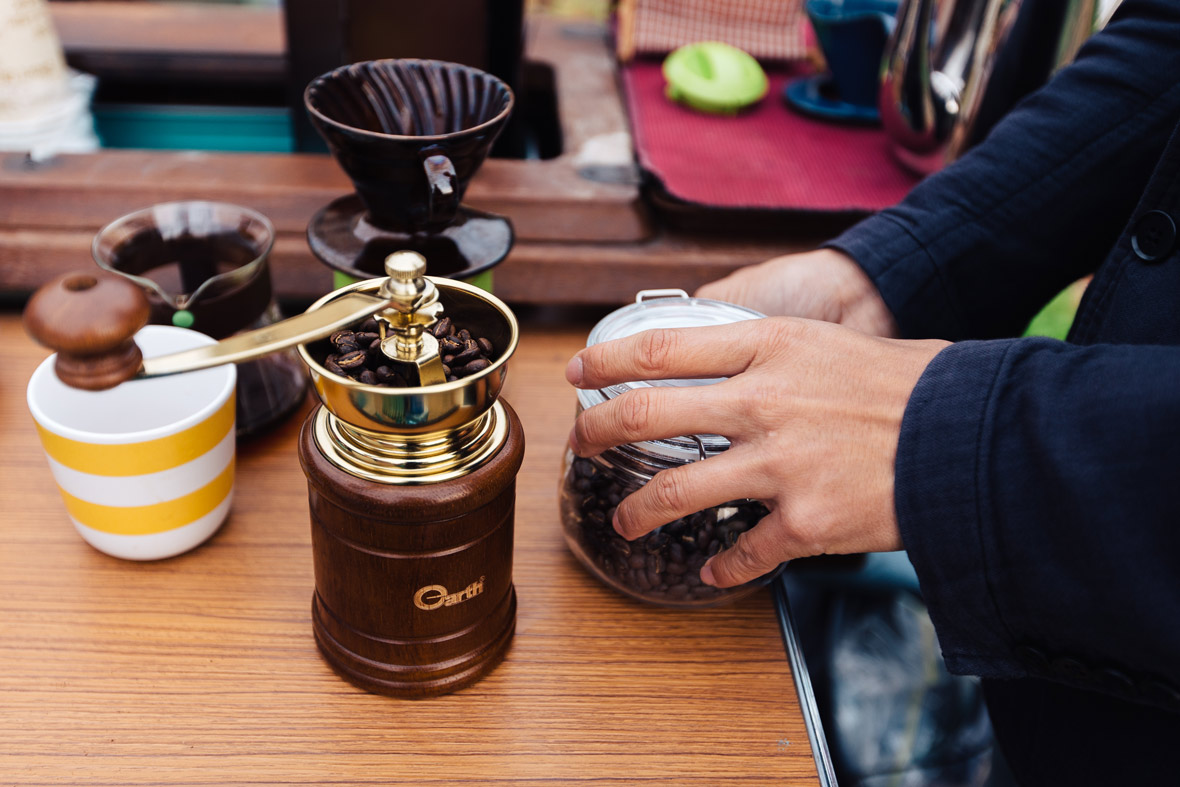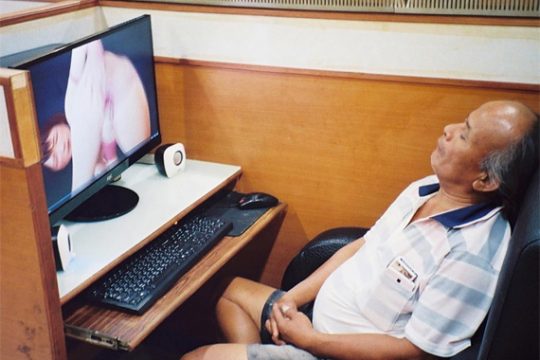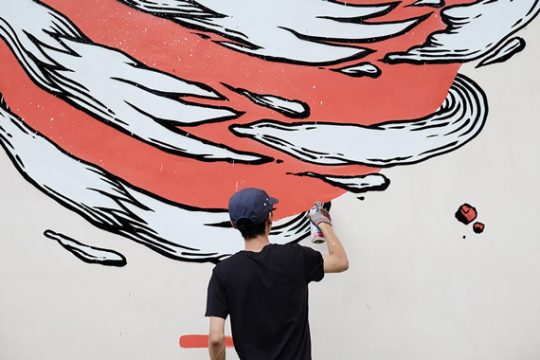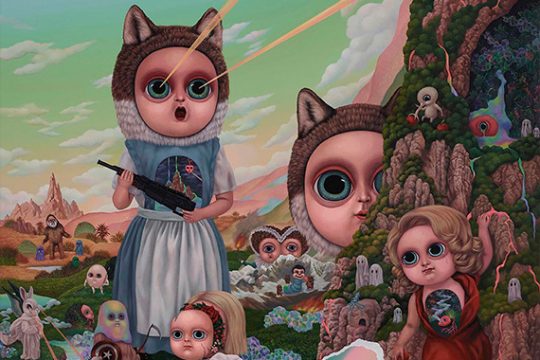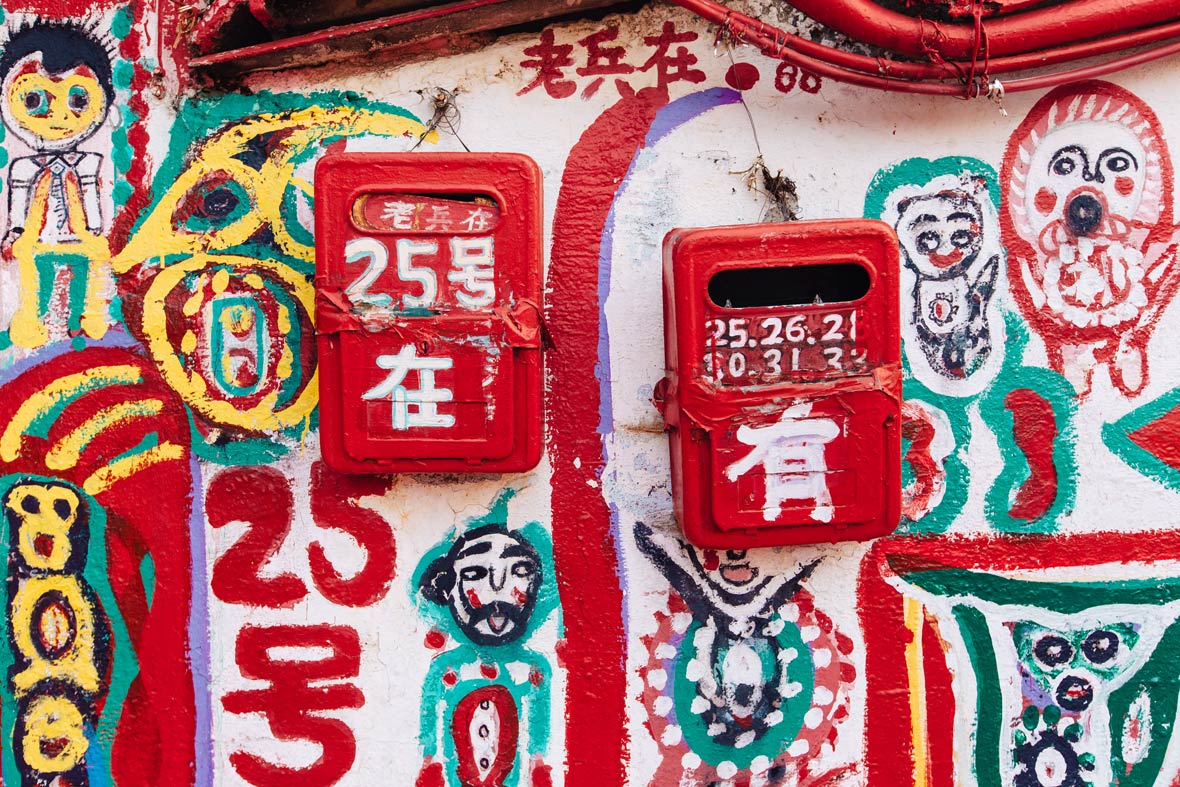
After the end of the Chinese Civil War in 1949, the KMT retreated to Taiwan. At that time, they began constructing housing for the soldiers of the ROC Armed Forces as well as their family members. These communities, known as military dependent villages, were built with limited funds and residents had no ownership rights since the property was on government-owned land. These villages were widespread all throughout Taiwan, but over the years, have deteriorated into slum-like conditions.
1949年中國國共內戰結束後,國民黨由大陸撤退至台灣。為了給一同撤退的部隊軍人及其眷屬安排住房,政府開始建造眷村。這些叫做眷村的社區,是限資建立在政府所有的土地上,不擁有個人產權。眷村迅速在台灣本土四處散播開,但隨著時間的推移,這些村落也漸漸淪為了貧民窟的代名詞。
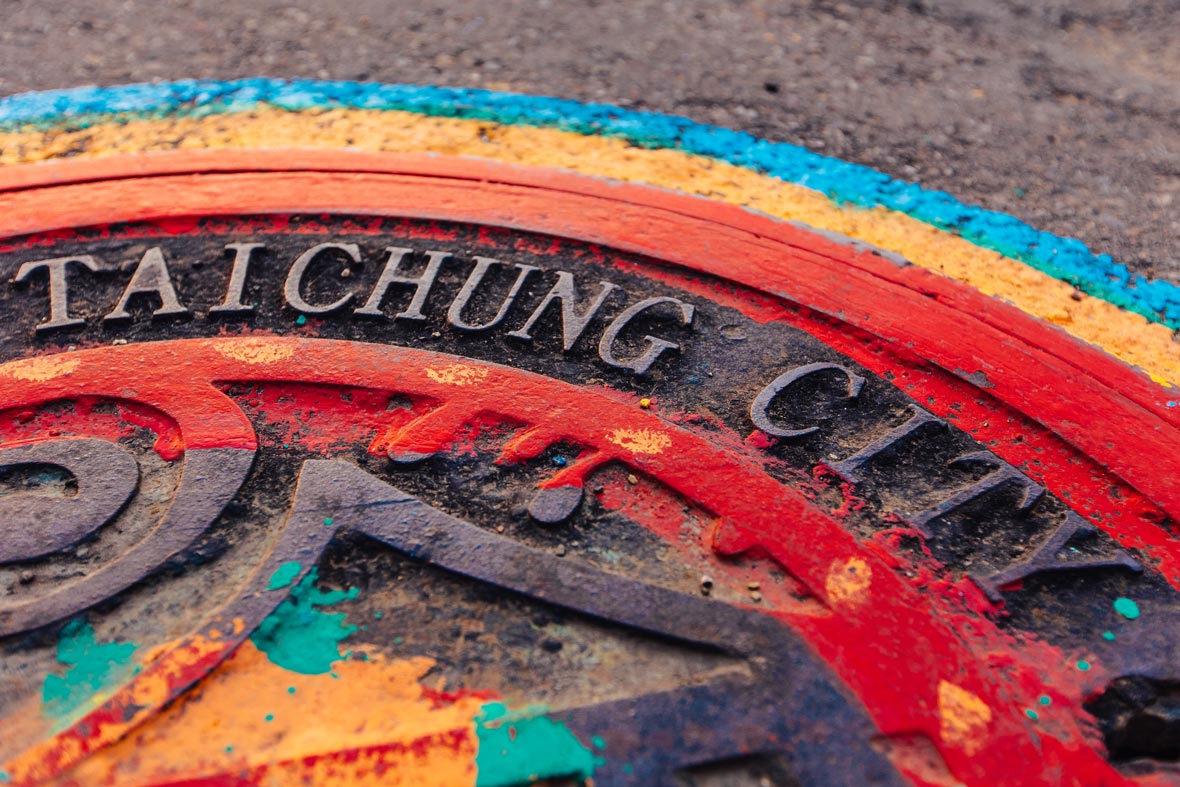
In Taichung, there’s a place known as Rainbow Village. The now wildly popular tourist attraction was once a military dependent village, decrepit and run-down. Huang Yongfu, a resident since the early days of this village, is the man behind this transformation. He has single-handedly painted the walls, doors, and even roads throughout the area with a dizzying array of vibrant colors, which has garnered him the fitting nickname of Rainbow Grandpa.
在台中,有一個被譽為彩虹眷村的地方。這個現今遠近馳名的旅遊勝地便是一個曾經衰敗的眷村。作為眷村里早期居民之一的黃永阜,即是見證此地盛衰之人,亦是將此地重整旗鼓之人。他憑藉一己之力,將鮮豔炫目的色彩,搬上這裡的一幕幕牆、一扇扇門,甚至一條條街。於是,他“彩虹爺爺”的美譽便由此而來。
In this modern era of skyscrapers and high rises, many military dependent villages, including this one, are viewed as nothing more than nuisances, with the potential to be turned into lucrative property. Similar to the fate of so many other military housing complexes from this era, this one was also poised for demolition. But through his artwork, Rainbow Grandpa has managed to preserve not only his beloved village, but also his nostalgic memories and a piece of early Taiwanese culture. The scheduled demolition was delayed, and was eventually called off, as thousands of signed petitions flooded into the mayor’s office. In 2014, the village officially became the “Rainbow Village Art Park” which includes Huang Yongfu’s residence as well as six other households.
在這個崇尚摩天大廈的摩登時代,包括彩虹眷村在內的許多眷村,討人嫌惡,成了地產開發商眼裡的搖錢樹。跟當今許多眷村的悲慘命運一樣,彩虹眷村也曾出現在舊屋拆遷的黑名單上。但因為彩虹爺爺用藝術對眷村的重新演繹,他得以保留的不僅有最心愛的故里,也有他的舊時記憶和一絲台灣古早文化。隨著成千上萬的民眾請願書湧入市長辦公室,原定的拆遷計劃被予以推遲,並最終取消,彩虹村倖免於難。 2014年,包含黃永阜住所和其他六間房屋的“彩虹眷村藝術公園”正式公示於眾,洗盡鉛華,迎來了遇經劫難後真正的“彩虹”。
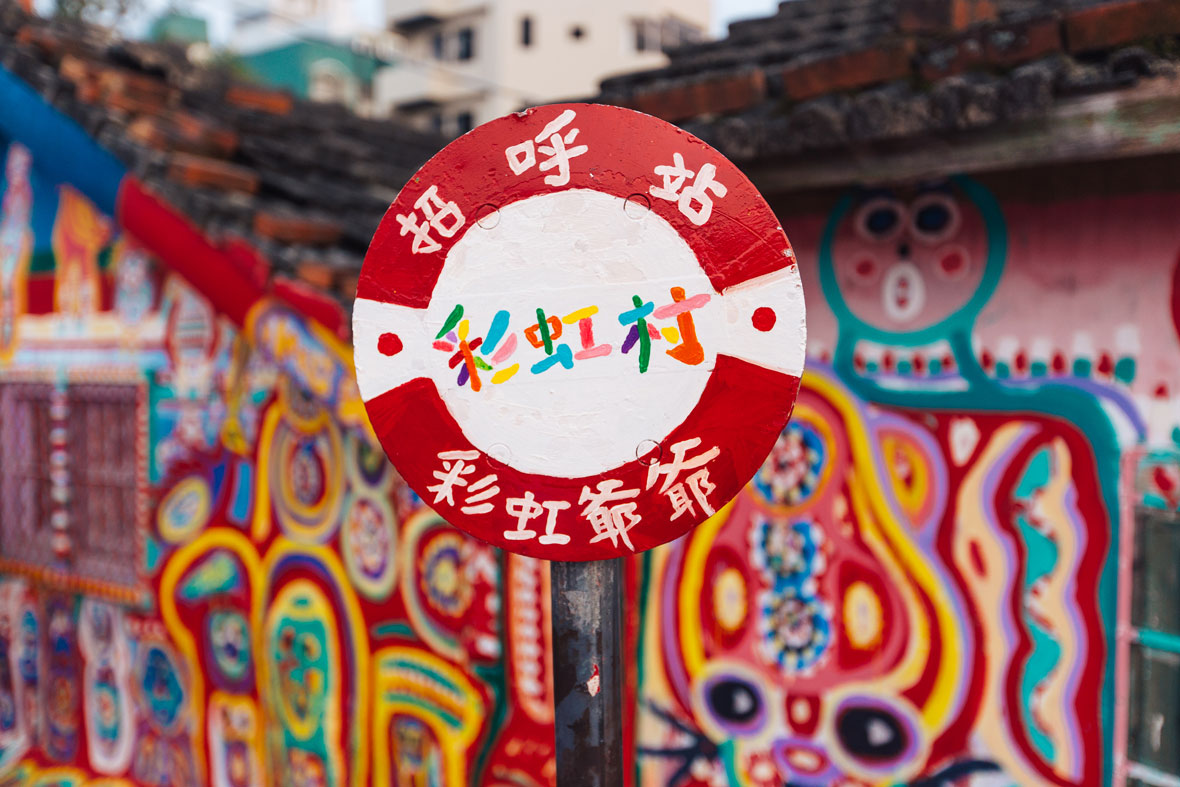
As an ex-soldier with no formal art training, Huang Yongfu reveals his only sources of inspirations are extracted from his everyday life, as well as newspapers that he reads on a daily basis. Using pension money, he started purchasing art supplies and began the daunting task of painting the village back in 2008. His colorful work involves imaginary characters, friendly animals, and a myriad of abstract designs. He has also inscribed numerous uplifting messages intended for visitors such as Ping An Bai Fu, meaning peace and best of luck.
作為一名沒受過任何專業藝術訓練的退役軍人來說,黃永阜的創作靈感均來源於其日常生活和從報紙上閱讀而來的信息。從2008年開始,他便用自己的養老金購買藝術材料,開始進行創作。他多彩的作品畫面裡有著天馬行空的角色,有友好可愛的動物,有抽象設計的美人魚等等。他也常常題寫一些吉祥語給參觀者們,例如“平安百福”等。
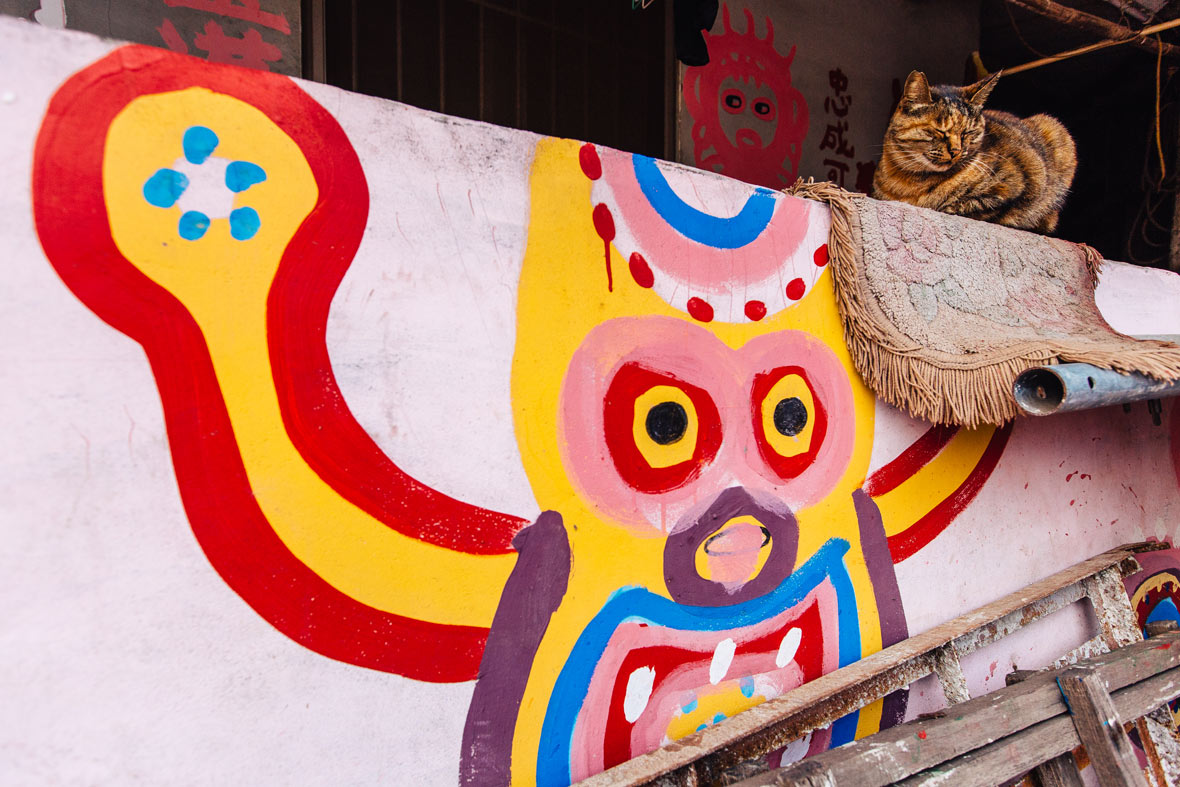
There is also a controversial, sociopolitical side to this story. Some argue that the artwork is no different from illegal graffiti, and many residents could’ve received a substantial amount of government compensation from the demolition. In addition to that, they would also be relocated into modern and better-equipped housing. In 2011, a neighbor, highly disgruntled by the number of loud tourists and the amount of trash that they would leave behind, voiced his discontent by spray painting Lao Bu Xiu in black over some of the artwork. This scathing message was intended for Mr. Huang, telling him behave more appropriately for his age.
這個故事也有爭議性、社政性的一面。有些人認為,這些作品與非法塗鴉無異,並且那些當地村民原本可以從中獲取數目可觀的拆遷費。同時,眷村村民也可以搬遷到更好的現代公寓。 2011年,彩虹眷村一村民,不堪忍受吵雜的遊客以及他們身後留下的垃圾,而在部分作品上噴上“老不修”三字以示不滿。這些尖銳字眼直指黃永阜先生,意在告誡他應為老而尊。
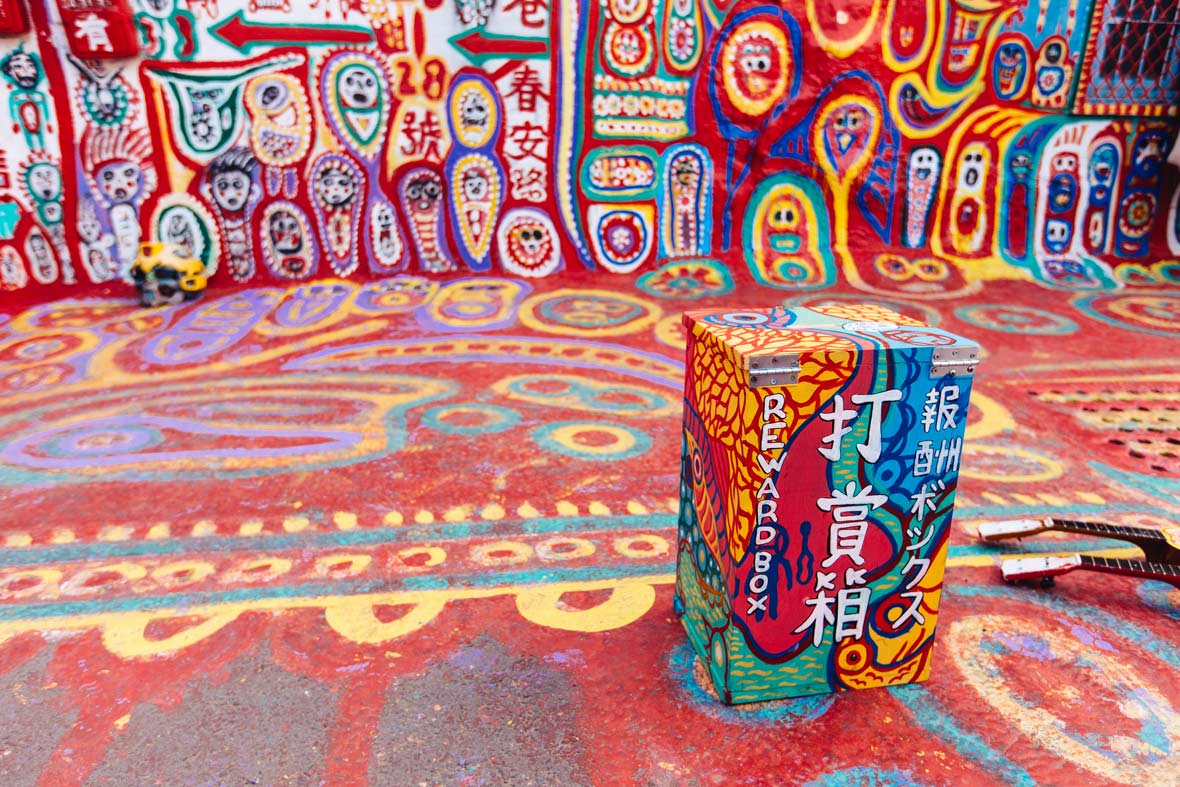
Regardless, this cultural and near-psychedelic visual experience continues to draw in countless visitors from around Taiwan as well as around the world every year. But besides tourists, the village also attracts other interesting characters. From a selfie-snapping, guitar-toting, tie-dyed Iron Man that plays renditions of popular Chinese songs to a nomadic barista selling hand drip artisanal coffee, the village seems to have a magnetic pull on creative individuals.
無論如何,這種獨到的文化和近乎迷幻的視覺盛宴每年都在不斷地吸著來自台灣本土以及世界各地的遊客源源湧入。除了遊客,彩虹眷村也吸引了許多有趣的創意人。從愛好自拍的七彩鋼鐵俠背著吉他演唱中文流行歌曲,到四處走動的咖啡館師販售手工滴壺咖啡,眷村似乎具備著吸引各類創意人的魔力。
Huang Yongfu, now 94-years-old, still lives in the same house he’s been living in for the last 38 years. And despite having already preserved the village by securing its place as a cultural landwork, he still continues to tirelessly paint the village day after day. During most afternoons, Rainbow Grandpa can be found around the village, happily conversing with visitors.
現年94歲的黃永阜,依然居住在這個他已經住了38年的房子裡。儘管通過將眷村加強塑造成一個文化性地標使其得以保留,但他還是在十年如一日地繼續創作。若你有機會參觀,或許你會發現彩虹爺爺正在平日暖陽里的午後與到訪者在眷村之中某處愉快攀談。
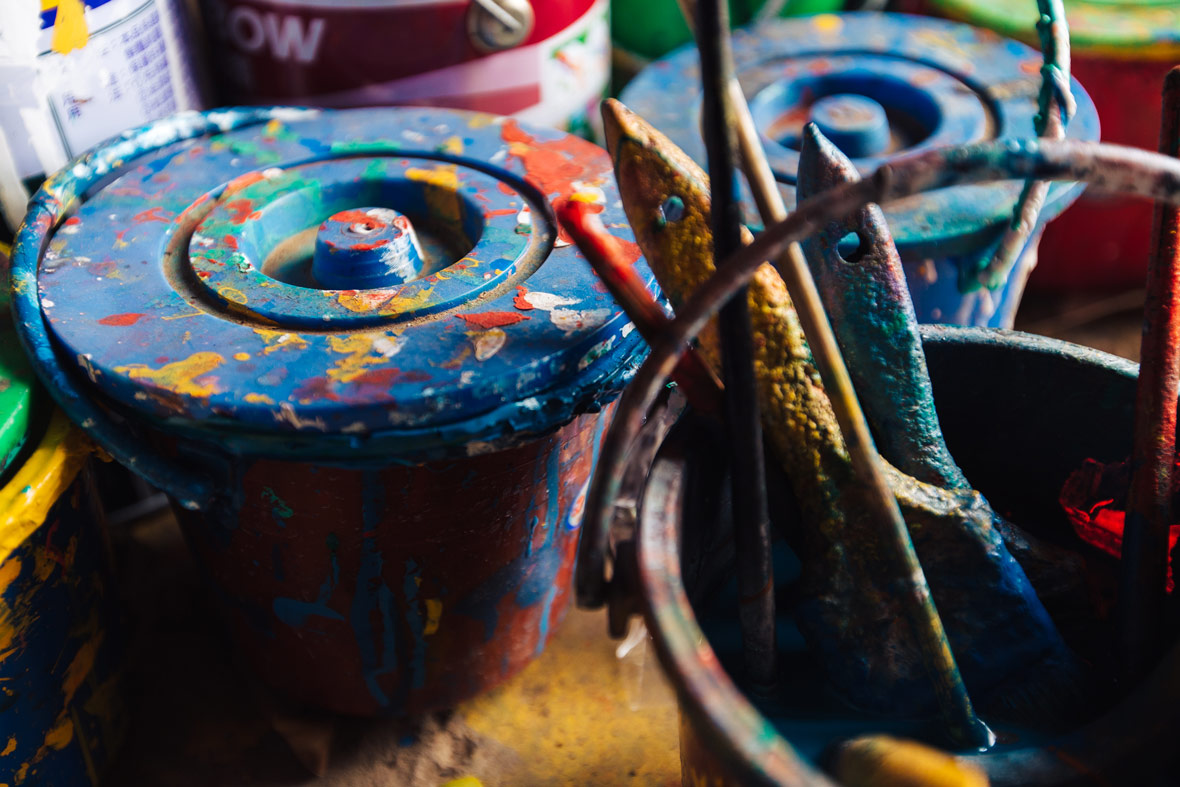
Address:
No.56, Chun’an Road
Nantun District, Taichung, Taiwan
Website: 1949rainbow.com.tw
Facebook: ~/1949rainbow
Contributor & Photographer: David Yen

